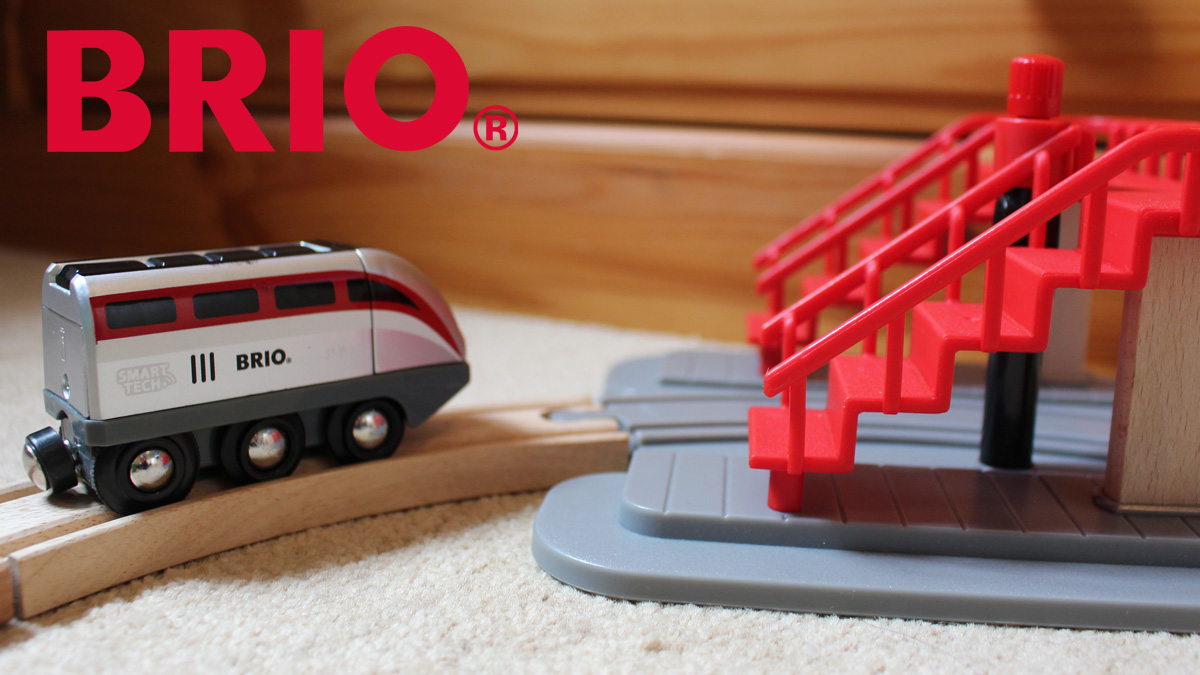
Toy trains have been around almost as long as their larger, real-life counterparts, and are still as popular today as ever. However, today’s kids can experience a level of interactivity and innovation in their toy trains unimaginable by Victorian children playing with their tin ones almost 150 years ago. My son and I, both keen train enthusiasts, have spent some time with two of the latest technological advances from Brio – the Smart Tech system and the App-Enabled Engine – to see what they’re all about and whether they’re worth the substantial cost.

Brio Smart Tech: Smart Engine Set with Action Tunnels
Controlled using RFID built into the pieces, Brio Smart Tech is an intelligent train system that makes toy trains appear to control themselves. There are multiple sets available now including a Washing Station and extra Action Tunnels, but all require the Smart Engine Set with Action Tunnels to work. This base set contains
- 1 Smart Engine and Carriage
- 3 Action Tunnels
- 1 Bridge
- 1 Wooden Buffer
- 9 Sections of Wooden Track
- 1 Figure
The items require no pairing process and will work together straight out of the box (once you’ve installed the batteries into the train of course). As the train moves around the track, it senses where it is in relation to the bridge and tunnels using it’s RFID sensor and reacts accordingly.
There are three tunnels contained in the set:
- Red Stop Tunnel – Causes the engine to stop on the track until you press the go button again,
- Green Reverse Tunnel – Causes the engine to change direction
- Grey Sound Tunnel – Causes the engine to sound its horn as it travels through.
The larger bridge structure also includes a signal which the engine can recognize. When the signal is set to green, the train will simply carry on through without stopping, but when it is set to red, the train will come to a stop under the bridge complete with braking sound effects and a tannoy announcement will sound allowing passengers to board. You can then switch the signal back to green and the train will set off again.
My son absolutely loved this set and has spent many hours playing with it, figuring out different places to position his tunnels to cause the trains to do interesting things. Because there is only a small amount of track contained in the set, you will find yourself rather limited if this is your only wooden train set, but combined with a larger collection it adds a lot of interest.
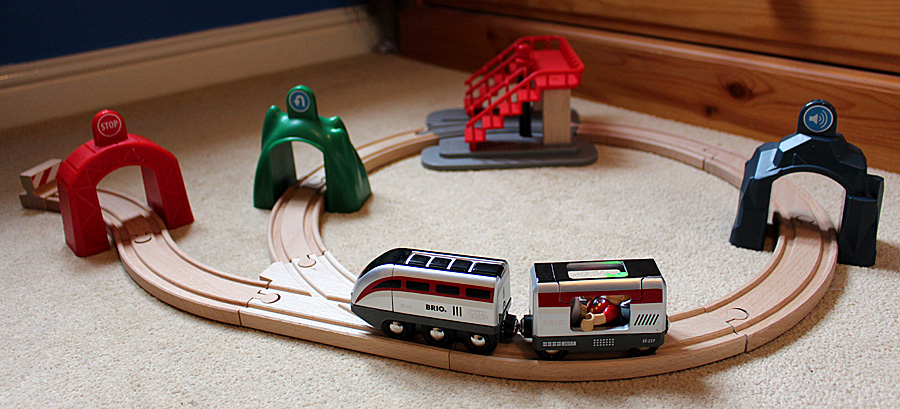
One thing I found disappointing with this set was the use of plastic. The tunnels are made from plastic as is most of the bridge structure and the figure. This makes the Smart Tech pieces stand out unpleasantly when combined with more Brio track or other toy trains and their accessories. It seems a real shame that Brio – a company known for its wooden train sets – couldn’t have found a way to make the RFID elements work with wood, or at least reduce the plastic sections to a bare minimum. Even the track section of the bridge structure is made from molded plastic. It’s here that I’ll also note the excessive amount of packaging that was used for this set. The large box it came in contained a lot of empty space and nearly every individual item was wrapped in its own plastic bag, as you can see in our unboxing video. There is absolutely no need for this and it simply serves to add more waste to landfill.
The cost of this set is an eye-watering $90 which is a lot for what you get in the box. That being said, it has given our toy trains a whole new lease of life and the system works exactly as it should with no tricky technical issues to overcome. There’s also a lot of scope for more items to be added to the range in the long run, creating an even more immersive play experience. I very much hope that Brio will eventually sell the RFID engines on their own at a lower cost because this set is currently the only way to get one. If you’d like to have more than one engine running on your line, at $90 a time that’s well out of most people’s budgets.
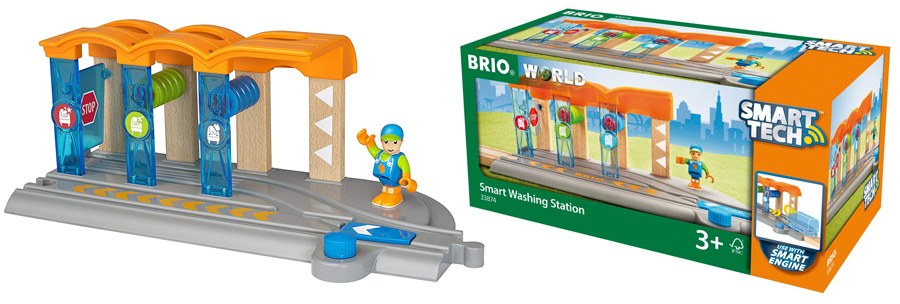
Brio Smart Tech: Washing Station
We were also sent the Smart Washing Station set which works with the Brio Smart Tech engine. When the engine approaches this building it will slow down and enter it, stopping at each of three sections to be washed, dried, and polished, complete with sound effects. After it has been washed, it will reverse out of the Washing Station and stop, waiting to be sent on its next journey. There is also a switch on the track so trains can either be directed into the Washing Station or continue along past it without entering. The Washing Station can also be used manually with non-Smart Tech trains by simply pushing them inside and pulling them out again and it costs around $35.
This was easily my favorite thing from the whole Brio Smart Tech range because it’s just so adorable. Watching the train go through its wash cycle never gets old, even when we must have the cleanest engines that ever ran on rails! However, as with the Smart Engine Set, this is largely made from plastic including the track element, which is disappointing, to say the least, because, once again, it sticks out when used as part of a larger wooden train set.
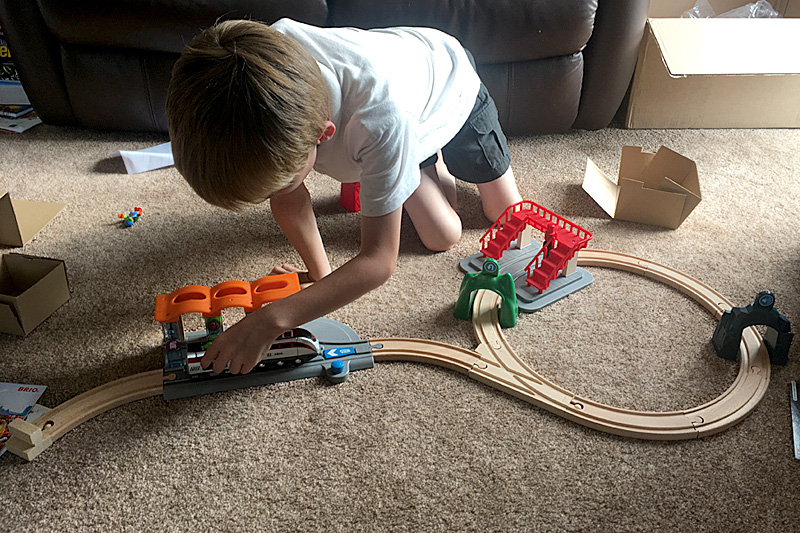
This set was far better packaged than either of the other Brio items we were sent as well, with the box just the right size for the item, although the figure it came with was wrapped in an unnecessary plastic bag again – you can see more on this in our unboxing video.

Brio App-Enabled Engine
Of all the toy trains we tried, the one my son was most excited about was the Brio App-Enabled Engine. As the name suggests, this is a single engine that can be controlled via Bluetooth using a phone or tablet. It is fully compatible with all existing Brio toy trains, track, and rolling stock and can be controlled via buttons on top of the train itself as well if a screen isn’t nearby.
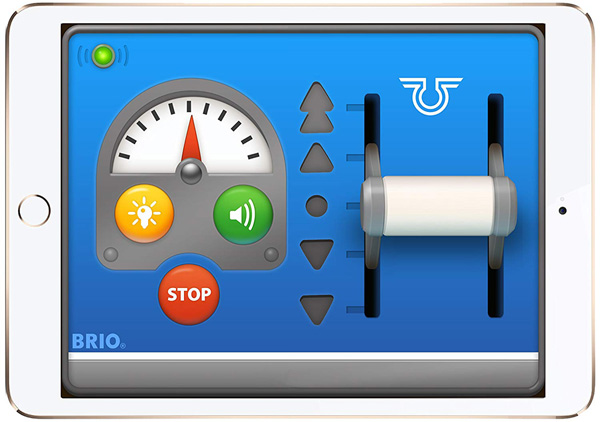
The app is well designed and will be simple for all kids to use, even toddlers. It is free to download on both iOS and Google Play. The right-hand side of the screen (when used in landscape mode, the buttons rearrange to accommodate portrait orientation) is given over to a throttle lever that can be pushed forward or pulled backward to make the train move forward and backward respectively. The further you push or pull the lever, the faster the train will go. On the right is a speedometer along with three buttons. Pressing the yellow button will turn the train’s headlights on and off, pressing the green button will sound the horn, and the red is an emergency stop button. The app uses Bluetooth to talk to the train so you will need to pair your device with the engine. However, this was almost completely painless with the engine instantly connecting with all the devices we have linked it to – easily one of the easiest setups of a Bluetooth device I have ever used.
Once you’ve paired your device to your train and built a track, you’re off. The learning curve to use this is almost a straight line it is so simple, and my son was soon having the time of his life controlling the train from the sofa as it zoomed around the large track he built in our living room. By combining this train with the Smart Tech engine and buildings, he was able to create something akin to a model railway which he could control from one spot, making this setup a sort of stepping stone toward a more hobbyist approach to model trains after playing with traditional push-along engines. It is worth pointing out that the buttons on the train itself will override anything being sent via the app, so if a child is controlling it via the app and another walks past and presses the stop button on the train, it will be forced to stop. This may be worth noting for parents of siblings who will almost certainly use it to annoy one another.
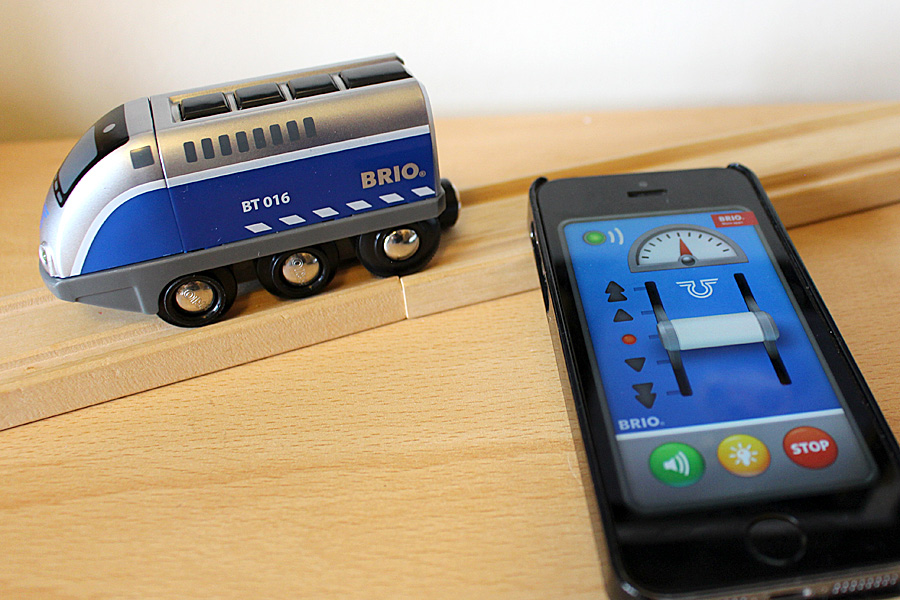
On a negative note, this is one of the worst packed toy trains I have ever come across. While the train itself measures a mere 4 inches long and 2 inches tall, the box is a whopping 11 inches long by 5.5 inches tall! This is purely in order to display the train on a fake cardboard track with a fake tablet screen showing the app in the background, as you can see in our final unboxing video. Obviously, this means the packaging uses far more resources than necessary, both in its manufacture and in the space it will take up during transport making it highly un-environmentally friendly, so I’d love to see a redesign done here to improve the packaging and make it much less wasteful.
The Future of Toy Trains
These new, tech-enhanced toy trains brought a new lease of life to our existing wooden train sets which my son, at nearly nine-year-old, was starting to outgrow. By adding in some small elements of tech, he has rediscovered his interest and the toy train sets have been out a lot over summer when they had spent much of the last year gathering dust in a box. These trains have the same limitations as other battery-operated trains you may have bought such as often derailing when attempting to get around tight corners, and struggling to climb up hills onto bridges – especially when pulling carriages or freight wagons – so they will need some level of supervision. I recently had to intervene to stop and escapee engine from chugging its way under our TV unit.
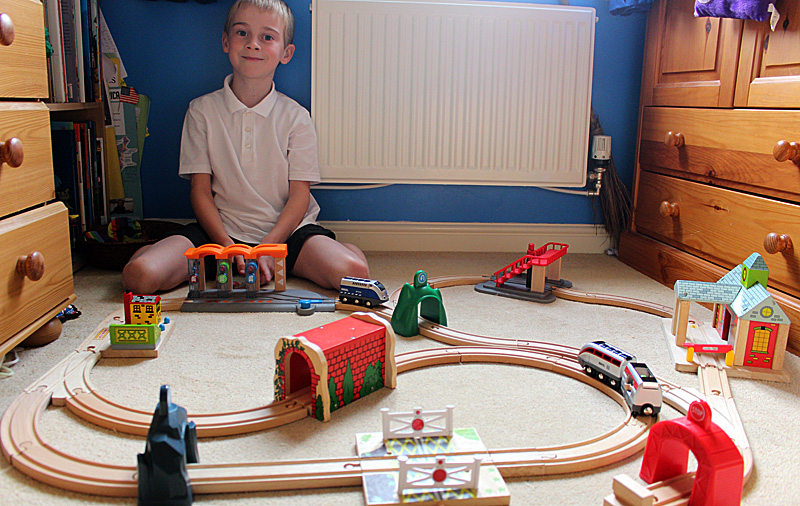
There is, of course, no denying the cost. $60 for a single engine (the current cost of the App-Enabled Engine) is incredibly expensive compared to the price of a standard push-along equivalent, and I’m not sure I can say with certainty that any of these sets are worth the expense, although I do feel they added a lot to our existing train sets and extended their play lifespan by months if not years. If you’re looking for something to encourage a screen-obsessed kid back toward playing with physical trains and to keep your kids playing with their trains a little longer, then these might be what you’re looking for (they will certainly make for a great surprise under the Christmas tree this holiday season) just be sure you know exactly what you’re paying for.
GeekMom received these items for review purposes.


